Related Research Articles

The potato is a starchy tuber of the plant Solanum tuberosum and is a root vegetable native to the Americas. The plant is a perennial in the nightshade family Solanaceae.

The sweet potato or sweetpotato is a dicotyledonous plant that belongs to the bindweed or morning glory family, Convolvulaceae. Its large, starchy, sweet-tasting, tuberous roots are used as a root vegetable. The young shoots and leaves are sometimes eaten as greens. Cultivars of the sweet potato have been bred to bear tubers with flesh and skin of various colors. Sweet potato is only distantly related to the common potato, both being in the order Solanales. Although darker sweet potatoes are often referred to as "yams" in parts of North America, the species is not a true yam, which are monocots in the order Dioscoreales.

Silage is a type of fodder made from green foliage crops which have been preserved by fermentation to the point of acidification. It can be fed to cattle, sheep and other such ruminants. The fermentation and storage process is called ensilage, ensiling or silaging. Silage is usually made from grass crops, including maize, sorghum or other cereals, using the entire green plant. Silage can be made from many field crops, and special terms may be used depending on type: oatlage for oats, haylage for alfalfa.

Food storage is a way of decreasing the variability of the food supply in the face of natural, inevitable variability. It allows food to be eaten for some time after harvest rather than solely immediately. It is both a traditional domestic skill and, in the form of food logistics, an important industrial and commercial activity. Food preservation, storage, and transport, including timely delivery to consumers, are important to food security, especially for the majority of people throughout the world who rely on others to produce their food.

The mung bean, alternatively known as the green gram, maash, moong, monggo, or munggo (Philippines), is a plant species in the legume family. The mung bean is mainly cultivated in East, Southeast and South Asia. It is used as an ingredient in both savoury and sweet dishes.

Ullucus is a genus of flowering plants in the family Basellaceae, with one species, Ullucus tuberosus, a plant grown primarily as a root vegetable, secondarily as a leaf vegetable. The name ulluco is derived from the Quechua word ulluku, but depending on the region, it has many different names. These include illaco, melloco, chungua or ruba, olluco or papalisa, or ulluma.
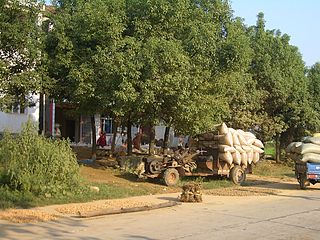
In agriculture, postharvest handling is the stage of crop production immediately following harvest, including cooling, cleaning, sorting and packing. The instant a crop is removed from the ground, or separated from its parent plant, it begins to deteriorate. Postharvest treatment largely determines final quality, whether a crop is sold for fresh consumption, or used as an ingredient in a processed food product.
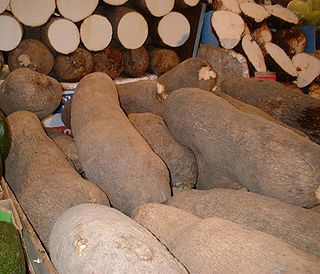
Yam is the common name for some plant species in the genus Dioscorea that form edible tubers. Yams are perennial herbaceous vines cultivated for the consumption of their starchy tubers in many temperate and tropical regions, especially in West Africa, South America and the Caribbean, Asia, and Oceania. The tubers themselves, also called "yams", come in a variety of forms owing to numerous cultivars and related species.

A root cellar or earth cellar is a structure, usually underground or partially underground, used for storage of vegetables, fruits, nuts, or other foods. Its name reflects the traditional focus on root crops stored in an underground cellar, which is still often true. A wide variety of foods can be stored for weeks to months, depending on the crop and conditions. The structure may not always be underground.
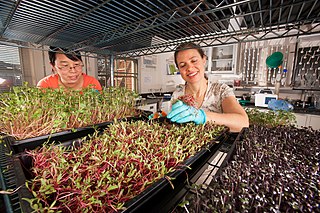
Microgreens are vegetable greens harvested just after the cotyledon leaves have developed. They are used as a nutrition supplement, a visual enhancement, and a flavor and texture enhancement. Microgreens can add sweetness and spiciness to foods. Microgreens are smaller than “baby greens” because they are harvested very soon after sprouting, rather than after the plant has matured to produce multiple leaves. Among upscale grocers, they are now considered a speciality genre of greens, good for garnishing salads, soups, sandwiches, and plates. They can be used as a main vegetable as well in certain recipes for intense flavor and nutrition. Many recipes use them as a garnish while some utilize them as the main ingredient. For example, garlic pea shoots, pea shoots or micro cabbage in cabbage soup, or coleslaw made with radish microgreen instead of cabbage. As microgreens become more popular for their intense flavor and nutrition, innovative chefs and cooks create new ways to use them.
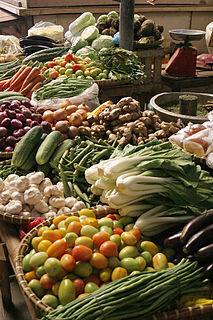
Vegetables are parts of plants that are consumed by humans or other animals as food. The original meaning is still commonly used and is applied to plants collectively to refer to all edible plant matter, including the flowers, fruits, stems, leaves, roots, and seeds. An alternative definition of the term is applied somewhat arbitrarily, often by culinary and cultural tradition. It may exclude foods derived from some plants that are fruits, flowers, nuts, and cereal grains, but include savoury fruits such as tomatoes and courgettes, flowers such as broccoli, and seeds such as pulses.

Ceratocystis fimbriata is a fungus and a plant pathogen, attacking such diverse plants as the sweet potato and the tapping panels of the Para rubber tree. It is a diverse species that attacks a wide variety of annual and perennial plants. There are several host-specialized strains, some of which, such as Ceratocystis platani that attacks plane trees, are now described as distinct species.
Phytophthora erythroseptica—also known as pink rot along with several other species of Phytophthora—is a plant pathogen. It infects potatoes causing their tubers to turn pink and damages leaves. It also infects tulips (Tulipa) damaging their leaves and shoots.
Rhizopus soft rot is a disease of the sweet potato. It is one of the most common to affect the sweet potato, happening during packing and shipping. The disease causes a watery soft rot of the internal portion of the storage root. Strategies to manage the disease include the development of resistant varieties, curing through the use of heat and humidity, and application of decay control products.
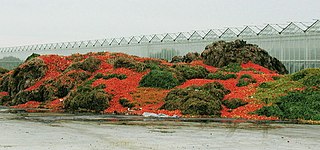
Post-harvest losses of vegetables and fruit occur at all points in the value chain from production in the field to the food being placed on a plate for consumption. Post-harvest activities include harvesting, handling, storage, processing, packaging, transportation and marketing.
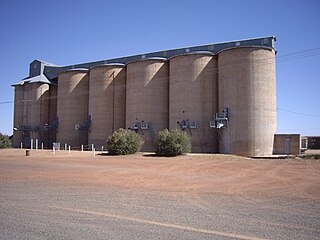
Grains may be lost in the pre-harvest, harvest, and post-harvest stages. Pre-harvest losses occur before the process of harvesting begins, and may be due to insects, weeds, and rusts. Harvest losses occur between the beginning and completion of harvesting, and are primarily caused by losses due to shattering. Post-harvest losses occur between harvest and the moment of human consumption. They include on-farm losses, such as when grain is threshed, winnowed, and dried. Other on-farm losses include inadequate harvesting time, climatic conditions, practices applied at harvest and handling, and challenges in marketing produce. Significant losses are caused by inadequate storage conditions as well as decisions made at earlier stages of the supply chain, including transportation, storage, and processing, which predispose products to a shorter shelf life.

Bacterial soft rots are caused by several types of bacteria, but most commonly by species of gram-negative bacteria, Erwinia, Pectobacterium, and Pseudomonas. It is a destructive disease of fruits, vegetables, and ornamentals found worldwide, and affects genera from nearly all the plant families. The bacteria mainly attack the fleshy storage organs of their hosts, but they also affect succulent buds, stems, and petiole tissues. With the aid of special enzymes, the plant is turned into a liquidy mush in order for the bacteria to consume the plant cell's nutrients. Disease spread can be caused by simple physical interaction between infected and healthy tissues during storage or transit. The disease can also be spread by insects. Control of the disease is not always very effective, but sanitary practices in production, storing, and processing are something that can be done in order to slow the spread of the disease and protect yields.
Fusarium dry rot is one of the most common potato diseases. It is caused by fungi in the genus Fusarium. This fungi causes a variety of colored rots in potatoes. This pathogen, while having both a sexual and asexual form, stays in an asexual cycle due to the way it spreads. Preferring warmer climates, it is not uncommon to find this pathogen in the northern United States where it has been reported to affect yield as much as 60%.
Scutellonema bradys, also known as yam nematode, is a migratory endoparasitic nematode causing major damage to yam crop in many African tropical regions, as well in parts of South and Central America and Asia. They can cause reduction of 20-30% in tuber weight at harvest.

Sweet potato cultivation in Polynesia as a crop began around 1000 AD in central Polynesia. The plant became a common food across the region, especially in Hawaii, Easter Island and New Zealand, where it became a staple food. By the 1600s in central Polynesia, traditional cultivars were being replaced with hardier and larger varieties from the Americas. Many traditional cultivars are still grown across Polynesia, but they are rare and are not widely commercially grown.
References
- 1 2 3 4 Ewell, P. (1993). "Sweetpotato in Africa: Research priorities to stimulate increased marketing". International Workshop on Methods for Agricultural Marketing Research. 16–20 March 1993. IARI Campus, New Delhi, India.
- 1 2 Bashaasha, B.; Mwanga, R.O.M.; Ocitti p’Obwoya, C.N.; Ewell, P.T. (December 1995). Sweetpotato in the farming and food systems of Uganda: A farm survey report (PDF) (Report). Nairobi, Kenya / Kampala, Uganda: International Potato Center / National Agricultural Research Organization. Archived (PDF) from the original on 2017-02-23.
- 1 2 3 4 5 6 7 8 9 10 11 12 13 14 15 16 17 18 19 20 21 22 23 24 25 26 27 28 29 30 31 32 33 34 35 36 37 38 39 40 41 42 43 44 45 46 47 48 49 50 51 52 53 54 55 56 57 58 59 60 61 62 63 64 65 66 67 68 69 70 71 72 73 74 75 76 77 78 Devereau, A. (1994-05-20). Tropical sweet potato storage: A literature review (PDF) (Report). Chatham, England: Overseas Development Administration, Natural Resources Institute. Archived (PDF) from the original on 2019-09-05.
- 1 2 3 4 5 Karuri, Edward Gichohi; Ojijo, N.K.O. (1994-07-01). "Storage studies on sweet potato roots: Experiences with KSP20 cultivar". In Sass, Pál (ed.). International Symposium on Postharvest Treatment of Horticultural Crops . 1993, Kecskemét, Hungary. Acta Horticulturae. Vol. 368. Leuven, Belgium: International Society for Horticultural Science. pp. 441–452. doi:10.17660/ActaHortic.1994.368.54. eISSN 2406-6168. hdl:11295/24131. ISBN 978-90-66052-36-9. ISSN 0567-7572. Archived from the original on 2021-07-12.
- ↑ Onwueme, I.C. (1982). The tropical tuber crops: Yams, cassava, sweet potato, and cocoyams. Chichester, Britain: English Language Book Society / John Wiley and Sons.
- ↑ Smit, N.E.; Ocitti p'Obwoya, C.N. (1994). "Piecemeal harvesting of sweetpotato: Its effect on yield and yield loss due to sweetpotato weevils". Third triennial conference of the African Potato Association. 9–13 May 1994. Sousse, Tunisia.
- 1 2 3 Dandago, M.A.; Gungula, D.T. (February 2011). "Effects of various storage methods on the quality and nutritional composition of sweet potato (Ipomea batatas L.) in Yola Nigeria" (PDF). International Food Research Journal. Serdang, Selangor: Universiti Putra Malaysia. 18 (1): 271–278. eISSN 2231-7546.
- 1 2 3 4 5 6 7 8 9 Hall, Andy J.; Devereau, Andrew D. (2000-12-01). "Low-cost storage of fresh sweet potatoes in Uganda: Lessons from participatory and on-station approaches to technology choice and adaptive testing" (PDF). Outlook on Agriculture. Thousand Oaks, California: SAGE Publishing. 29 (4): 275–282. doi:10.5367/000000000101293347. eISSN 2043-6866. ISSN 0030-7270. S2CID 153734086. Archived (PDF) from the original on 2019-07-25.
- ↑ Ndamage, G. (1988). "Developpement et amelioration de la production de la patate douce au Rwanda" [Development and improvement of sweetpotato production in Rwanda]. Bulletin Agricole du Rwanda (in French). 21 (1): 31–40. AGRIS US201302057692.
- ↑ Ramirez, G. Paneque (1992). "Cultivation harvesting and storage of sweet potato products". In Machin, David H.; Nyvold, Solveig (eds.). Roots, tubers, plantains and bananas in animal feeding. FAO Animal Production and Health Papers. Vol. 95. Rome, Italy: Food and Agriculture Organization. ISBN 92-5-103138-X. Archived from the original on 2021-01-18.
- 1 2 Karuri, Edward Gichohi; Hagenimana, Vital (1995). "Use of ambient conditions and sawdust in storage of sweet potato (Ipomoea batatas L.) roots in Kenya" (PDF). Zimbabwe Journal of Agricultural Research. 33 (1): 83–91. hdl:11295/10824. Archived (PDF) from the original on 2019-07-24. Retrieved 2021-07-16.
- 1 2 3 4 5 6 Mutandwa, Edward; Gadzirayi, Christopher Tafara (Spring 2007). "Comparative assessment of indigenous methods of sweet potato preservation among smallholder farmers: Case of grass, ash and soil based approaches in Zimbabwe" (PDF). African Studies Quarterly . Gainesville, Florida: University of Florida. 9 (3). eISSN 2152-2448. ISSN 1093-2658. Archived (PDF) from the original on 2021-07-15.
- 1 2 Kapinga, Regina E.; Rees, Deborah; Westby, Andrew; Ndunguru, Gabriel T.; Rwiza, Elizabeth; Tomlins, Keith I.; Stathers, Tanya; Jeremiah, Simon; Mbilinyi, Lawi (2000). "Increasing the contribution of sweetpotato to sustainable rural livelihoods in Tanzania" (PDF). Proceedings of the Twelfth Symposium of The International Society for Tropical Root Crops: Potential of Root Crops for Food and Industrial Resources. 10–16 September 2000. Tsukuba, Japan. pp. 285–291. Archived (PDF) from the original on 2019-07-30.